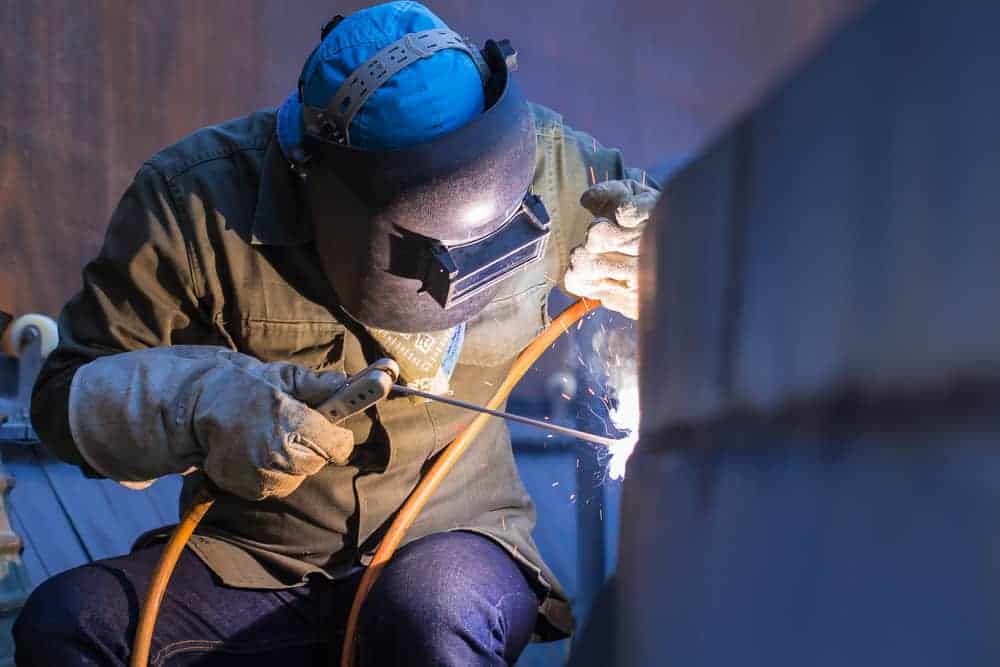A Comprehensive Guide to Recognizing Exactly How Welding Assessment Functions: Techniques, Requirements, and Best Practices for Quality Control in Metal Manufacture
Comprehending the complexities of welding evaluation is essential for maintaining the honesty of steel construction. Executing best techniques can substantially enhance quality guarantee steps. The landscape of welding evaluation is not without its obstacles.
Value of Welding Evaluation
Although welding is a crucial procedure in different industries, its honesty directly influences the security and performance of parts and structures. Reliable welding evaluation is essential for recognizing problems that can compromise the top quality and sturdiness of bonded joints. This process ensures adherence to developed specifications and criteria, which are vital for preserving architectural integrity and functional reliability.
Welding inspection offers multiple purposes, consisting of verifying that the welding process has been executed properly, analyzing the quality of products made use of, and confirming that the completed item meets regulative and market criteria (Houston Welding Inspection). Through rigorous assessment, possible issues such as porosity, cracks, and incomplete combination can be identified early, mitigating and avoiding expensive repair services safety and security threats
Moreover, consistent welding evaluations foster confidence among stakeholders, including engineers, clients, and regulatory bodies, by demonstrating a dedication to top quality guarantee. The relevance of welding examination can not be overemphasized; it is indispensable not just for conformity with legal needs however also for enhancing the overall efficiency of bonded frameworks. Eventually, a robust welding inspection program is a proactive action that safeguards versus failures, guaranteeing the longevity and integrity of bonded elements in their intended applications.
Usual Welding Evaluation Strategies

Visual evaluation is the very first line of defense, enabling examiners to determine surface problems such as fractures, undercuts, or incomplete combination. Radiographic testing utilizes X-rays or gamma rays to reveal internal defects, making it optimal for complicated welds. Ultrasonic testing employs high-frequency sound waves to spot subsurface problems, offering precise measurements of weld honesty.
Magnetic fragment screening works for ferromagnetic materials, highlighting surface and near-surface gaps when bits are put on a magnetic field. Conversely, color penetrant testing uses a fluid color to expose surface-breaking defects, ensuring that also the smallest defects are spotted.
Each strategy has its limitations and toughness, commonly requiring a combination of approaches for detailed assessment - Houston Welding Inspection. By using these evaluation techniques, top quality assurance in steel construction is achieved, making sure that welded frameworks meet safety and security and performance criteria
Market Specifications for Welding


The American Welding Culture (AWS) and the American National Specification Institute (ANSI) are 2 famous organizations that establish welding standards. AWS D1.1, for example, outlines the needs for welding steel frameworks, while AWS D1.2 concentrates on light weight aluminum. Globally, the ISO 3834 conventional addresses quality requirements for blend welding, giving a structure suitable across nationwide boundaries.
Ideal Practices for Quality Control
Quality assurance in welding is extremely important to attaining secure and sturdy buildings. Establishing a thorough high quality management system (QMS) customized to the certain my explanation welding project is essential.
Normal training and accreditation of welding employees are crucial for maintaining a skilled labor force. Continuous education and learning on the most current welding techniques and innovations ensures that assessors and welders are well-informed concerning present criteria and methods.
In addition, carrying out pre-weld examinations to assess products and equipment can stop defects before they take place. Houston Welding Inspection. During the welding process, real-time surveillance and documentation of welding specifications aid identify variances immediately. Post-weld assessments need to involve complete examinations using non-destructive testing (NDT) approaches to make certain the stability of the welds
Moreover, keeping clear interaction among staff member promotes a society of top quality. Normal audits and testimonials of the welding procedure aid identify areas for improvement. By adhering to these finest methods, companies can accomplish ideal top quality guarantee, inevitably bring about boosted safety and efficiency in steel manufacture tasks.
Obstacles in Welding Examination
Although welding inspection is critical for guaranteeing structural integrity, it offers a selection of obstacles that can make complex the evaluation process. One significant obstacle is the irregularity in welding methods and materials used, which can influence the uniformity of weld high quality. Different welders might utilize varying methods, bring about disparities that inspectors requirement to review and determine.
One more difficulty involves the discovery of problems. Non-destructive screening (NDT) techniques, such as ultrasonic and radiographic testing, can be intricate and require skilled professionals to translate results precisely. False positives or downsides can occur, possibly resulting in pricey rework or jeopardized safety and security.
Furthermore, the presence of environmental factors, such as temperature and moisture, can influence the honesty of welds and the effectiveness of examination techniques. Examiners must likewise browse the regulatory landscape, making certain compliance with market criteria, which can vary by territory and application.
Verdict
Finally, welding examination plays a vital function in making certain the integrity and security of steel manufacture. Employing a range of examination techniques, adhering to well established sector standards, and executing efficient top quality monitoring practices collectively improve the dependability of bonded frameworks. Regardless of the obstacles faced in the evaluation process, a commitment to constant enhancement and adherence to finest techniques can dramatically bolster the quality control framework, fostering greater self-confidence amongst stakeholders in the welding sector.
Reliable welding examination is essential for identifying defects that can endanger the top quality and longevity of bonded joints.In addition, regular welding assessments foster confidence among stakeholders, including designers, customers, and regulative bodies, by demonstrating a dedication to top quality guarantee.The American Welding Society (AWS) and the American National Standards Institute (ANSI) are anchor 2 famous organizations that establish welding criteria. Throughout the welding process, real-time monitoring and documents of welding specifications help recognize variances promptly. In spite of the challenges encountered in the evaluation process, a dedication to continuous renovation and adherence to finest practices can dramatically boost the quality guarantee framework, promoting greater self-confidence among stakeholders in the welding sector.